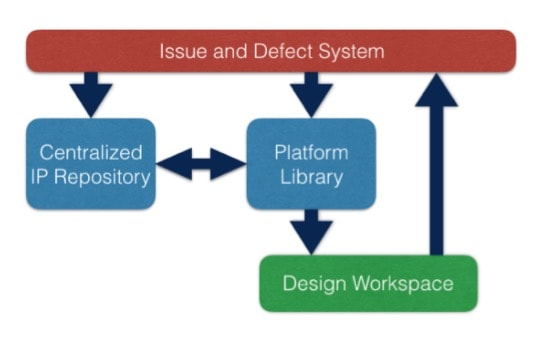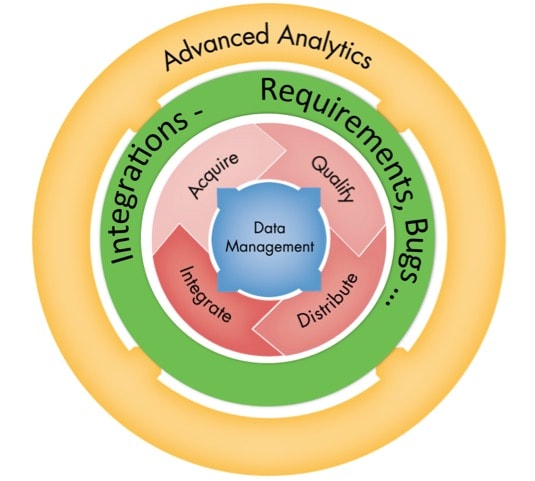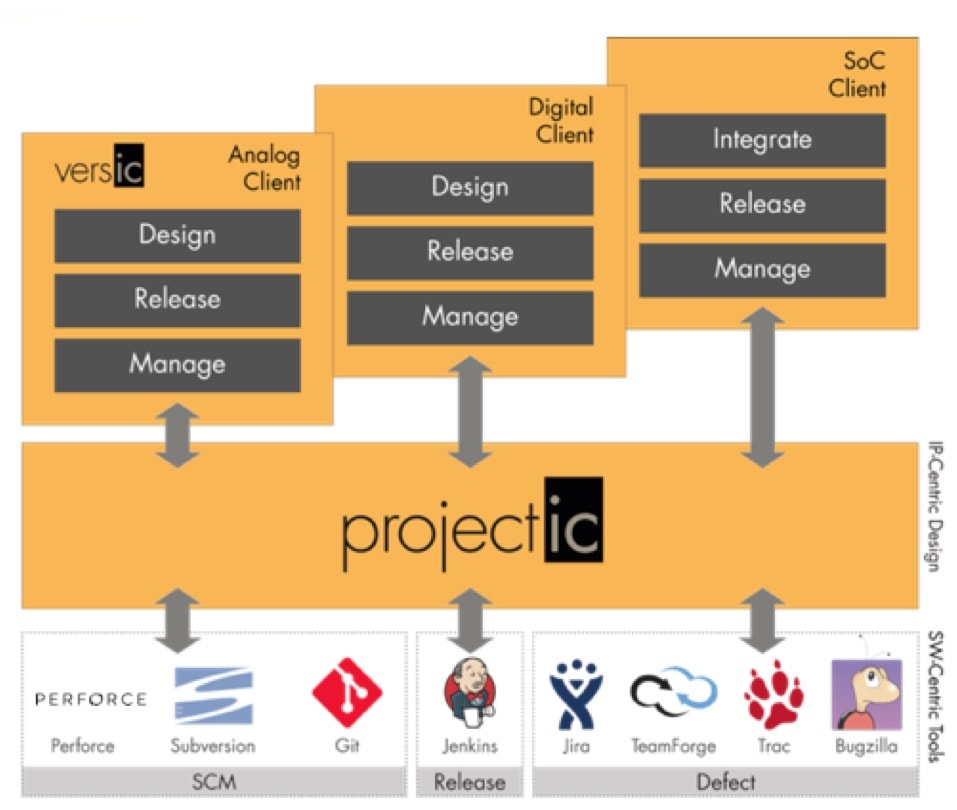Semiconductor design IP and verification IP have been around for decades, but just because your company has lots of IP doesn’t mean that you’re getting all of the benefits of a design reuse methodology. Maybe your business has encountered some of the following issues:
- Redundant IP spread out across multiple design groups
- Unstructured design data
- Regional IP design reuse differences
- Untracked IP
- Out of date IP
- Embedded SW, device drivers, bare metal SW not tracked
- Ad-hoc IP management
I’ve been reading about the concept of Platform Based Design and it’s a design methodology where a platform becomes the starting point for your new or derivative design that includes all of the IP and design data, already configured and known to work, ready to reuse. Getting benefit out of platform based design means that you must transition from an ad-hoc design reuse approach to one that is more formalized and repeatable. Your new goal is to use a centralized location for platforms that other designers can reuse as a starting point for their projects.
Each company figures out what their own platforms are going to be based on their product lineup and how common IP blocks get reused. Here’s a diagram of what a centralized system looks like to enable platform based design:

Your centralized IP repository may contain blocks like an ARM core, WiFi, Bluetooth and standard cells, while the Platform Library would then bundle combinations of these IP blocks that are commonly used together. Designers in this methodology can browse the platform library and start to use platforms in their own design workspace. If there are any issues or bugs with an IP block or platform, then all users effected will be notified.
Let’s start to look at the seven reasons that platform based design is beneficial for SoC design groups.
1. Design Reuse Saves Time
Using a system as shown above ensures that when a new SoC design begins that team members can browse a library of platforms and IP for a starting point, instead of starting from scratch, saving time from re-inventing the wheel again. This semiconductor IP will be preconfigured, pretested and include all of the configuration files and scripts. Your design workspace will have the latest, most stable IP, not something that is out of date.
2. Notifications are Easy
Any user of the IP or platform are registered, so if anything is updated then all users will be notified that a newer, more stable version is ready for their workspace. Your platform libraries can be even more useful by adding embedded software, devices drivers and any bare metal software.
3. An IP Management System Brings Order
Ad-hoc IP management may have worked when your company used only a handful of IP blocks and you could just talk to co-workers in the hallway about changes, however today a complex SoC can have hundreds of IP blocks and thousands of files to manage in the design and verification process.

Related blog – What SoC size growth means for IP management
4. Let Software Track the Details
You’ll want to use an IP management system that give you features like:
- Cataloging, searching, analytics
- Links between issue and defect systems and bug systems
- Easy and comprehensive variants management
Related blog – Making PLM actually work for IC design
5. Track IP Across Time
Beyond just tracking IP, you can even add features for lifecycle management, so that IP can be tracked on all projects for all versions. This lets a team know where IP is being used, and who is using IP at any moment in time. The contract department will be very grateful to have these details at their fingertips to ensure compliance with IP vendors.
Related blog – Bulking up of design data call for version control on steroids
Methodics
So who has all of this technology, ready to go? At DAC in June I met with Michael Munsey of Methodicsto get an update on what their EDA company has to offer. Their IP Lifecycle Management (IPLM) tool is called ProjectIC, and it embodies the concepts introduced so far about platform based design of SoCs. Here’s how their ProjectIC tool can be used by analog, digital and SoC designers:

At the top we can see the three types of users (Analog, Digital, SoC) where each has responsibility for the design, release and management of IP for their portion of the project. So with ProjectIC you will have internal and external design traceability as the IP creators and IP users are connected. Team members will know where IP is being used and who is specifically using IP as this info gets stored in a database and creates a centralized catalog, enables automated notifications, and provides analytics to make collaboration easy.
Related blog – Go Native with Methodics at DAC in Austin
In the bottom of the diagram there are popular bug tools like Jira and Bugzilla, even requirement management tools like Jama/Countour, plus popular third party databases that you likely already use.
Summary
Hopefully this blog has introduced the concept of platform based design in a manner that gets you to think about how it would benefit your present methodology of creating SoC designs. I presented at least 5 ways that using platform based design would benefit your next IC design project, so why not give Michael Munsey a call and schedule a conference call to learn more. Read the complete White Paper here.
Share this post via:






Comments
There are no comments yet.
You must register or log in to view/post comments.